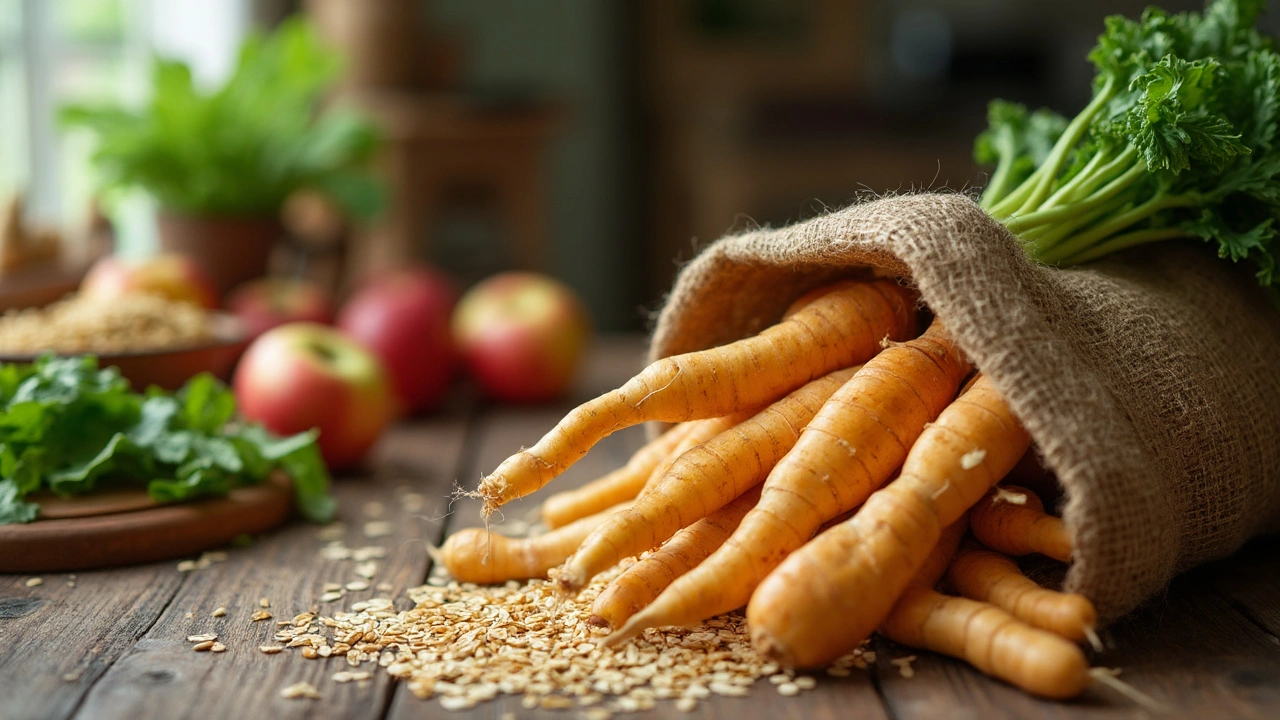Root Vegetables: How to Eat, Store and Use Them Safely
Root vegetables are cheap, filling, and easy to cook. Think carrots, beets, potatoes, sweet potatoes, parsnips, radishes, ginger and turmeric. They add color, texture and nutrients to meals without much fuss. Below you’ll find simple picking and storage tips, quick cooking ideas, and a few safety notes if you’re taking certain medications.
How to pick and store
Choose firm roots with smooth skin. Avoid soft spots, excessive shriveling, or mold. For potatoes skip any with green patches or lots of sprouts — green means solanine, which can taste bad and upset your stomach. Carrots and parsnips should be straight and solid; tiny cracks are okay.
Storage rules are simple: keep most root vegetables cool, dark and dry. Potatoes like a cool pantry, not the fridge. Sweet potatoes prefer similar conditions. Carrots and beets last longer in the fridge—trim the leafy tops first to avoid wilting. Ginger and turmeric keep well in the fridge or freeze in slices for long-term use. Use breathable bags or a root cellar-style box if you have one.
Quick cooking and uses
Roasting brings out natural sweetness: toss chopped root veg with a little oil, salt and pepper and roast at 200°C (400°F) for 25–40 minutes depending on size. Steaming preserves vitamins; mash steamed sweet potato with a splash of milk for a fast side dish. Grate raw beets or carrots into salads for crunch. Thinly sliced parsnips or potatoes make a cozy gratin. For fast flavor, sauté ginger or turmeric in oil first, then add other vegetables or rice.
Small, practical swaps: use mashed sweet potato instead of mashed white potato for extra vitamin A, or roast a mix of carrots and parsnips as a sweeter side. Save peelings and trimmings to make a simple vegetable stock.
Health and safety notes
Root vegetables are generally safe, but a few things matter if you take medicines. Potatoes and sweet potatoes are relatively high in potassium compared with other vegetables; if you have kidney disease or take potassium‑sparing drugs, check with your doctor about portion sizes. Beets contain natural nitrates that can lower blood pressure—use caution if you already take blood pressure meds and monitor how you feel.
Fiber in many root veg slows digestion and can alter how some drugs are absorbed. If you take medication with a narrow dosing window, ask your pharmacist whether you should take it on an empty stomach or separate it from a very high‑fiber meal by an hour or two. If you’re on warfarin or other blood thinners, discuss your diet with your clinician—most root vegetables are low in vitamin K, but overall diet changes matter.
Final tip: try small changes first. Roast one tray of mixed roots, note how your body reacts if you’re on meds, and adjust portions. Root vegetables are versatile—use them to make meals more satisfying without overcomplicating your day.

Parsnip: The Unsung Hero of Dietary Supplements You Need to Know About
Apr 23, 2025, Posted by Mike Clayton
Parsnip is often overlooked in the world of dietary supplements, but it packs a nutritional punch that rivals trendier options. Loaded with fiber, vitamins, and unique plant compounds, parsnip can strengthen immunity, boost gut health, and support healthy blood pressure. This article unpacks why this humble root deserves a prime spot in your routine. Plus, there are down-to-earth tips on how to sneak it into your meals and get the most from every bite. Discover how parsnip stands out from the supplement crowd.
MORESEARCH HERE
Categories
TAGS
- treatment
- online pharmacy
- dietary supplement
- side effects
- health
- dietary supplements
- health benefits
- online pharmacy Australia
- medication adherence
- medication safety
- thyroid disorders
- treatment option
- calcipotriol
- blood pressure
- erectile dysfunction
- closer look
- optimal health
- sexual health
- bacterial infections
- nutrition
